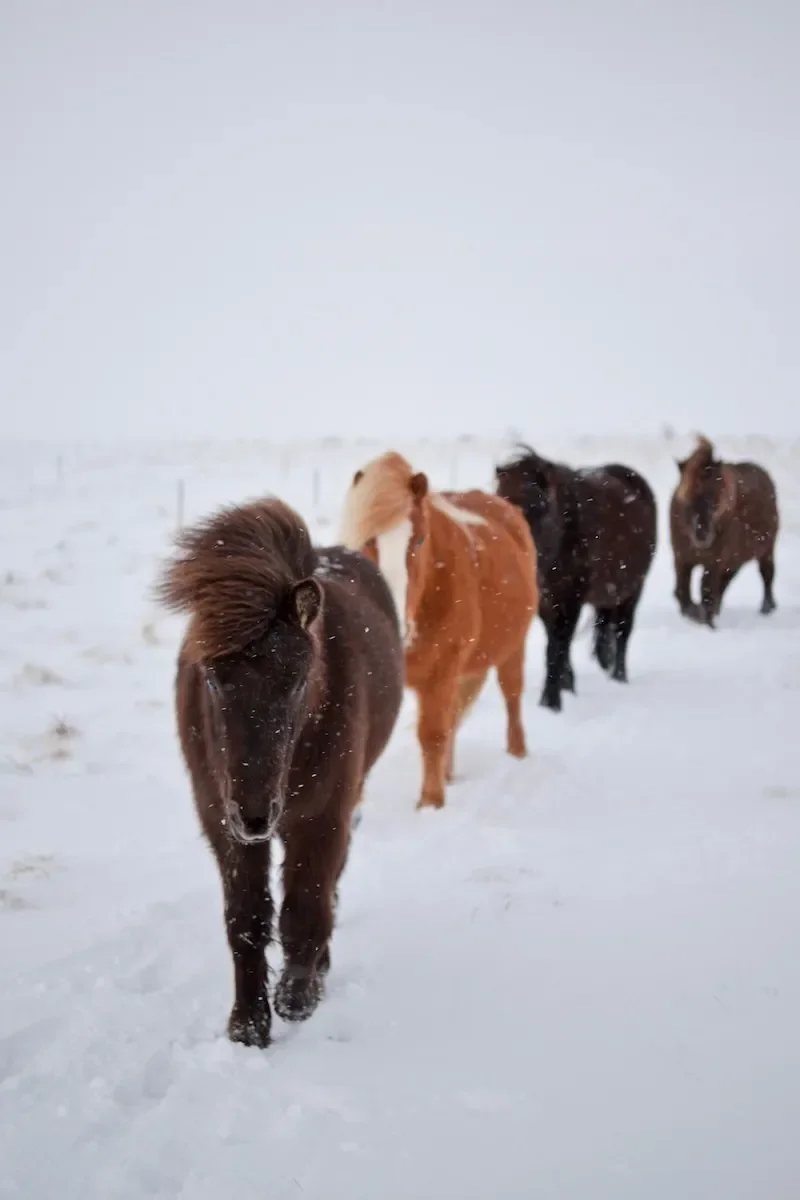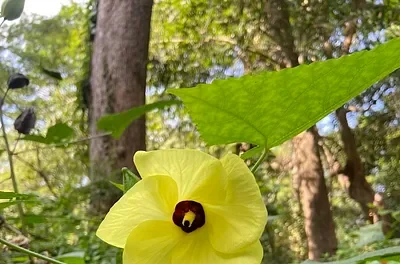Standing Strong in Stormy Times
In stormy times—when uncertainty, disruption, and division seem to dominate—it’s easy to feel powerless. Yet moments in nature and history remind us that resilience is possible when we connect to something greater than ourselves.
How Ordinary Heroes Face Down the Trickster Forces of Chaos
In stormy times—when uncertainty, disruption, and division seem to dominate—it’s easy to feel powerless. Yet moments in nature and history remind us that resilience is possible when we connect to something greater than ourselves.
I was hiking in upstate New York one day when a thunderstorm erupted. Just as the lightning and downpour began, my friend and I came upon the cement remains of an abandoned building. We stood beneath a doorway just wide enough to shield us.
Then, as the storm ended, we walked on and encountered a large, big-eyed deer about six feet away. We looked at each other for a long moment—the deer and me. We were both still, calm, and seemingly unafraid. Then the deer slowly walked away, and I was left with a sense of awe.
There can seem to be a kind of magic to moments like these. They remind us that we’re part of life forces greater than ourselves.
That experience came back to me last week as I grappled with some of the same questions many people are asking now:
How have we arrived at such stormy skies ahead?
How can we best seek shelter for ourselves and others?
And how can we not miss the all-important moments of peace and joy life still offers?
One lens that has helped me make sense of it all is the power of archetypes—those universal patterns within our collective human psyche.
The Power of Archetypes
Carl Jung, the Swiss psychologist and psychiatrist, described archetypes as “the great decisive forces” in life. He believed that when archetypes are activated, they bring about significant events—not through sheer effort, but through deeper psychological energies.
If that sounds abstract, consider this: a woman becomes a mother and, in an instant, feels a surge of protectiveness central to motherhood—even if moments earlier, she doubted she could care for a child.
That is the power of the Mother archetype. It connects us to something larger than our individual experience.
But today, a different archetype has taken center stage—one we would do well to understand.
The Trickster Archetype: Chaos, Disruption, and Revelation
The Trickster archetype embodies chaos, mischief, and the breaking of social norms. It thrives on disruption and destabilization, creating confusion and uncertainty.
Yet the Trickster also plays an essential role: exposing hypocrisy and revealing what’s not working. Tricksters throughout history—from Loki to Coyote to modern political and cultural figures—provoke transformation by forcing hidden truths to the surface.
Still, chaos is not easy to live through. So the question becomes:
When we face the disruptive power of the Trickster, what archetype can help us meet the moment with courage and integrity?
Calling on the Hero Archetype
After a lifetime of studying patterns of resilience and transformation, this answer seems clear: we must cultivate the Hero archetype.
The Hero represents our innate capacity to face challenges, overcome adversity, and strive for wholeness. Jung saw it as a symbol of the individual’s journey toward self-realization and growth.
Put another way:
The Hero archetype is our capacity to stand upright in the storm—especially when chaos threatens to pull us apart.
When we activate the Hero within, we draw on qualities greater than fear: courage, altruism, integrity, and purpose—all essential for navigating uncertain times.
Finding Your Ordinary Act of Heroism
Research published in the Journal of Personality and Social Psychology shows that seeing your life as a hero’s journey—complete with challenges, setbacks, and growth—leads to greater well-being, satisfaction, and meaning.
This perspective reminds us that heroism isn’t reserved for extraordinary people; it’s available to all of us in ordinary acts of courage and care.
Here’s a thought experiment to try:
Name one heroic action you want to take in the first quarter of 2025.
Don’t judge it or weigh the odds of success. Just ask: What would someone with courage, altruism, and integrity do? Then take the first small step in that direction.
Heroism begins in a single choice—a decision to stand strong in stormy times.
A Force Greater Than Chaos
When facing destructive forces that are bigger than us, consider turning toward forces that are also bigger than us—but braver, clearer, and better.
It’s like drawing clean, nourishing water from a deep well. That deeper strength—our shared humanity, courage, and compassion—can sustain us and help us do some good.
This essay first appeared in my Substack newsletter, Savor the World: Reigniting Our Capacity to Save It. Subscribe here to receive new essays on clarity, courage, and connection in uncertain times.
Finding Clarity and Courage in Divided Times
In a world marked by uncertainty and division, it’s easy to focus on what we should do next. But sometimes the more important question is who we want to be. Finding clarity and courage in divided times begins not with strategy, but with identity—within ourselves, our organizations, and our shared humanity.
In a world marked by uncertainty and division, it’s easy to focus on what we should do next. But sometimes the more important question is who we want to be. Finding clarity and courage in divided times begins not with strategy, but with identity—within ourselves, our organizations, and our shared humanity.
Who Do We Want to Be in Uncertain and Divided Times?
“I’ve moved on from despair to denial,” someone told me last week.
I laughed—like many of us, feeling that I’ve been on that trajectory, too.
Despair and denial are typical stages of adjustment to unwelcome news. But there is a third stage that matters most because it marks the moment we get back in the game.
That stage is deciding.
I don’t mean making decisions about what now?—as in, what actions we’ll take to defend democracy, equality, and the natural world in the face of growing challenges. I mean making decisions about who now?—as in, who do we want to be in response to these challenges?
Some people, of course, don’t have the luxury of reflection; certain leaders must act immediately. Godspeed to them.
But for the rest of us, this holds true:
When confronted with a significant new challenge, deciding who we want to be before deciding what we want to do leads to wiser decision-making and more durable resilience.
From an organizational perspective, this is also about values-driven leadership and employee engagement. Research published in The American Review of Public Administration (2022) reveals a connection between identity, values, and engagement at work—a reminder that clarity about who we are shapes how we lead and sustain purpose over time.
So, let’s unpack the question.
If the incoming administration upholds its promises about 2025 and beyond, who do you want to be in the face of growing attacks on democracy, human rights, and the environment?
Do you want to be fearful or courageous?
A bystander or an everyday hero?
Someone who adapts to destructive forces—or someone who continues to honor the ideals of democracy, equality, and the safeguarding of nature?
Building Bridges and Staying True to Our Values
These questions extend to our relationships as well. Who do you want to work with, be inspired by, and inspire? More pointedly, who do you want to be in relationship to neighbors, family members, and colleagues who voted for a leader whose values you find antithetical to your own?
Last weekend, I was fortunate to reflect on these questions in the virtual company of several wise teachers during a retreat at the Upaya Zen Center. Roshi Joan Halifax, Terry Tempest Williams, and Rebecca Solnit each shared insights that spoke to both moral courage and emotional resilience.
But one moment stood out.
It came in a prerecorded message from Christiana Figueres, a heroine of the climate movement and a key architect of the Paris Climate Accord.
How to Build Bridges in Polarized Times
As she prepared for the birth of her first grandchild, Figueres acknowledged that she had considered cocooning with her family during these turbulent times. But seclusion, she said, leads to weakness.
So instead, she chose to look outward—to the work ahead—and to build bridges by engaging in deep listening with those who did not share her values on climate action.
“This,” she said, “is the toughest life challenge yet, and one that awaits all of us who want to till the ground for future generations.”
In other words, she decided who she wanted to be going forward.
That decision—to listen rather than retreat—offers a model of courage, compassion, and clarity for anyone seeking to lead or connect across differences.
Why Hard Conversations Build Stronger Teams and Communities
These are not the kinds of conversations we often have. Studies show that more than 70 percent of people avoid difficult conversations in the workplace. Yet avoiding discomfort doesn’t create safety—it breeds distance and disengagement.
Hard conversations are often the ones most worth having—because they help us make the decisions worth making so we can continue the work worth doing.
Research also reveals a clear connection between discussing hard topics at work and improved productivity, culture, and engagement. In times of uncertainty, the courage to talk honestly about values, purpose, and direction strengthens collective resilience.
Reflection and Discussion Questions for Leaders and Teams
Here are a few questions you might begin thinking about—or, better yet, discussing:
What would you fight for, even if you knew you would lose?
What gift do you believe you have to bring to this moment?
Do you believe that among the uncertainties before us, something good can emerge—that we might grow through the very act of engagement?
These questions help individuals and teams rediscover clarity, courage, and connection—the essential building blocks of resilience in divided times.


